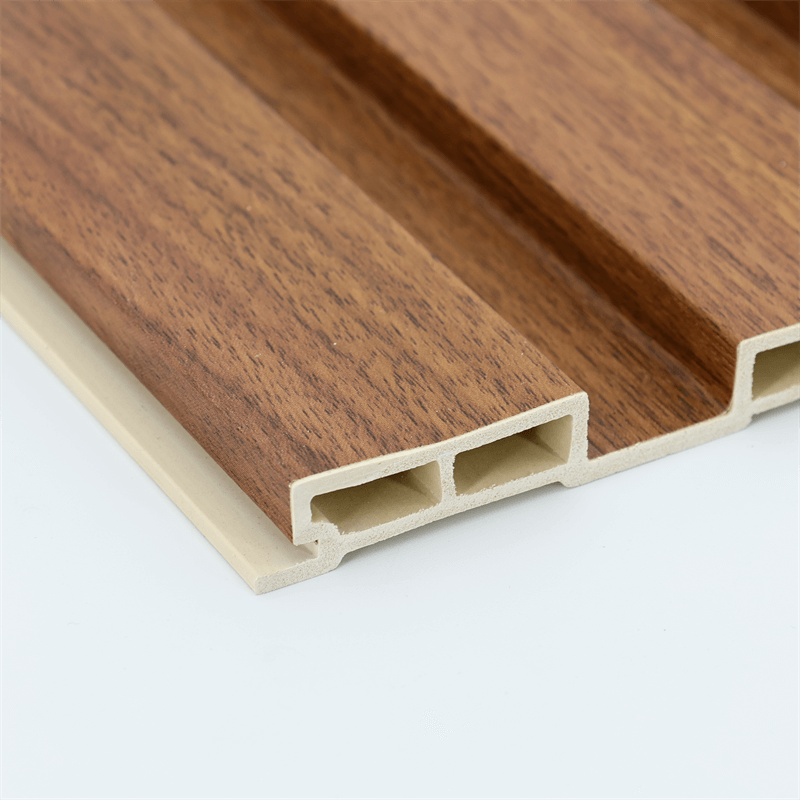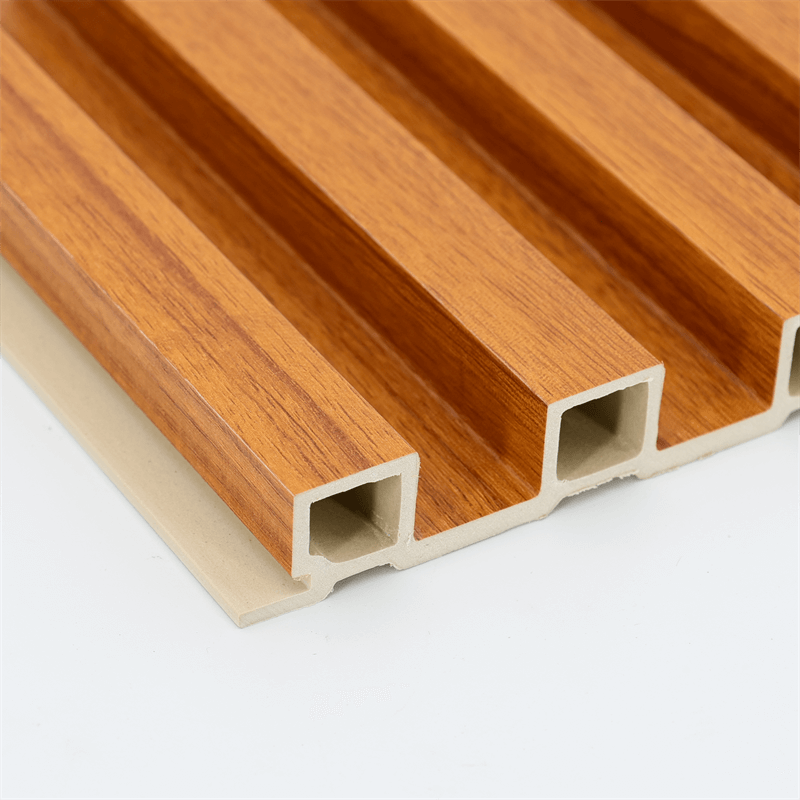Moisture-prone areas, such as bathrooms, kitchens, and basements, present unique challenges when it comes to selecting suitable wall coverings.
These spaces require materials that can withstand high humidity levels, moisture exposure, and potential water damage.
WPC (Wood-Plastic Composite) wall panels have emerged as the perfect solution for such environments.
This essay explores the use of WPC wall panels in moisture-prone areas, discussing their composition, advantages, applications, and their ability to provide a durable and visually appealing solution.
I. Understanding WPC Wall Panels:
WPC wall panels are composed of a blend of wood fibers obtained from sustainable sources and recycled thermoplastics, such as polyethylene or polyvinyl chloride (PVC).
This combination creates a material that replicates the natural beauty of wood while harnessing the benefits of plastic.
WPC panels are engineered to withstand moisture, making them an ideal choice for areas where traditional materials, such as natural wood or gypsum board, may be susceptible to damage.
II. Advantages of WPC Wall Panels in Moisture-Prone Areas:
- Moisture Resistance: The primary advantage of WPC wall panels in moisture-prone areas is their exceptional resistance to water and humidity. Unlike natural wood, which can warp, swell, or rot when exposed to moisture, WPC panels remain stable and unaffected. This moisture resistance ensures that the panels retain their structural integrity, preventing damage and the need for frequent replacements.
- Mold and Mildew Prevention: Moisture-prone areas are susceptible to mold and mildew growth, which can not only damage the walls but also pose health risks. WPC wall panels inhibit the growth of mold and mildew, thanks to their moisture-resistant properties. By using WPC panels, homeowners can create a healthier indoor environment, reducing the risk of respiratory issues and allergies associated with mold exposure.
- Durability and Longevity: WPC wall panels offer exceptional durability, outperforming traditional materials in terms of their resistance to wear, impact, and general damage. Their composition, combining wood fibers and thermoplastics, provides strength and structural stability. This durability translates into long-term cost savings, as WPC panels require minimal maintenance and have a prolonged lifespan.
- Easy Maintenance: WPC wall panels are designed for easy maintenance, requiring minimal effort to keep them clean and in optimal condition. Unlike natural wood, which may require regular sealing or varnishing, WPC panels do not require any additional treatments. A simple wipe-down with a damp cloth or mild detergent is sufficient to remove dirt or stains, ensuring that the panels retain their aesthetic appeal without compromising their moisture resistance.
III. Applications of WPC Wall Panels in Moisture-Prone Areas:
- Bathrooms: Bathrooms are particularly vulnerable to moisture and humidity, making them an ideal application for WPC wall panels. These panels can be used as an alternative to tiles or traditional bathroom wall coverings, providing a visually appealing and moisture-resistant solution. WPC panels can be installed as complete wall coverings or as accents, creating a cohesive and aesthetically pleasing environment.
- Kitchens: Kitchens are another area prone to moisture, especially near sinks, countertops, and cooking areas. WPC wall panels can be used as backsplashes or as partial wall coverings in kitchen spaces, offering protection against water splashes and humidity. Their easy maintenance and resistance to staining make them an attractive choice for busy kitchen environments.
- Basements: Basements often suffer from high humidity levels and potential water intrusion. WPC wall panels can transform basements into usable and visually appealing spaces by providing a moisture-resistant and durable wall covering. Whether used for recreational areas, home offices, or entertainment rooms, WPC panels ensure that the basement remains a comfortable and inviting space.
- Laundry Rooms: Laundry rooms are constantly exposed to moisture, particularly from washing machines and drying processes. WPC wall panels offer a practical and visually pleasing solution for these areas, protecting the walls from water damage and creating a clean and organized space.
IV. Visual Appeal and Design Options:
WPC wall panels not only provide functional advantages but also offer a wide range of design options to suit various aesthetic preferences.
These panels come in different colors, finishes, and textures, allowing homeowners and designers to create customized spaces that reflect their style.
From contemporary to traditional designs, WPC panels can be tailored to harmonize with the overall interior theme, transforming moisture-prone areas into visually stunning environments.
WPC wall panels have emerged as the perfect solution for moisture-prone areas, offering exceptional moisture resistance, durability, and ease of maintenance.
Their ability to withstand high humidity levels and prevent water damage makes them an ideal choice for bathrooms, kitchens, basements, and laundry rooms.
By using WPC panels, homeowners can create visually appealing spaces that remain structurally intact, while also minimizing the risk of mold and mildew growth.
As the demand for durable and moisture-resistant wall coverings continues to grow, WPC wall panels stand as a testament to their effectiveness in addressing the challenges of moisture-prone areas.
The combination of natural wood aesthetics and plastic’s functional advantages makes WPC panels a reliable and visually pleasing choice for transforming these spaces.
Whether in residential or commercial settings, WPC wall panels offer a durable and long-lasting solution that enhances both the aesthetics and functionality of moisture-prone areas.



